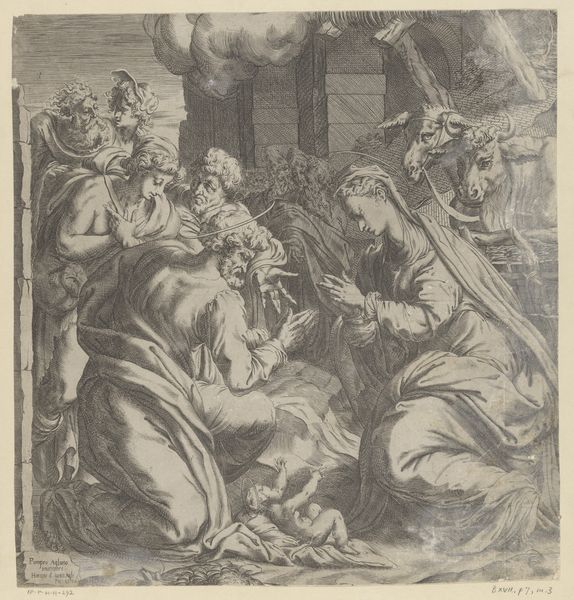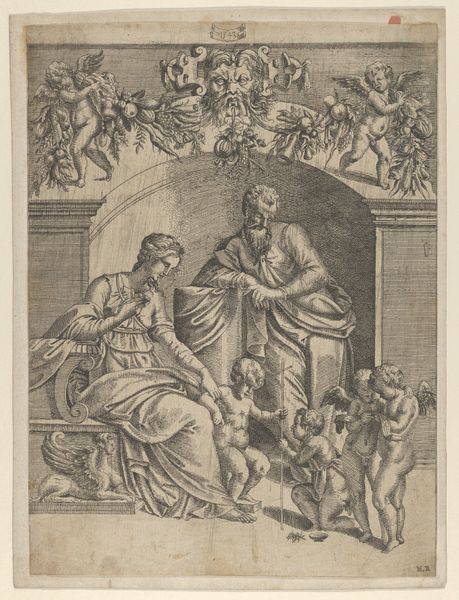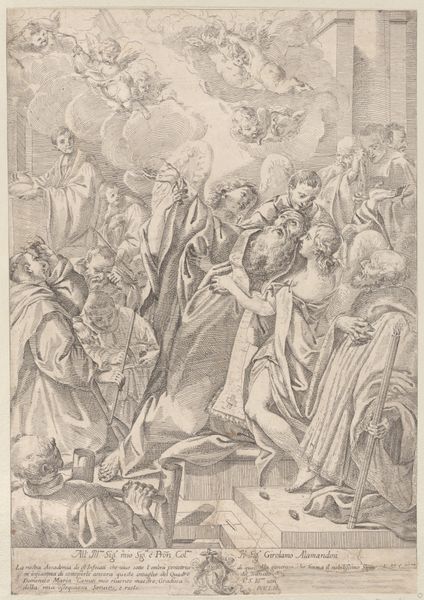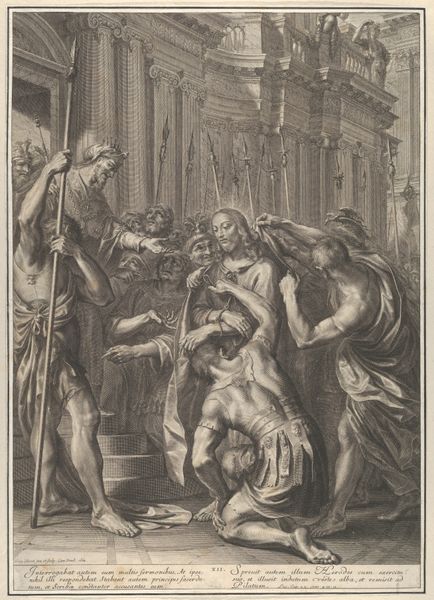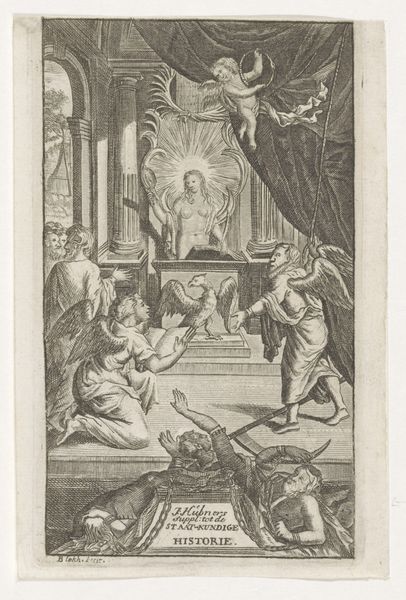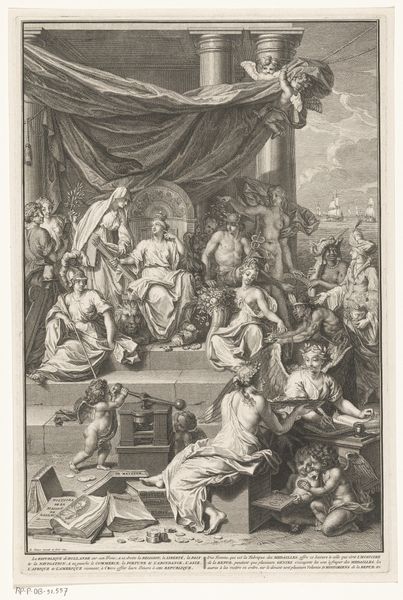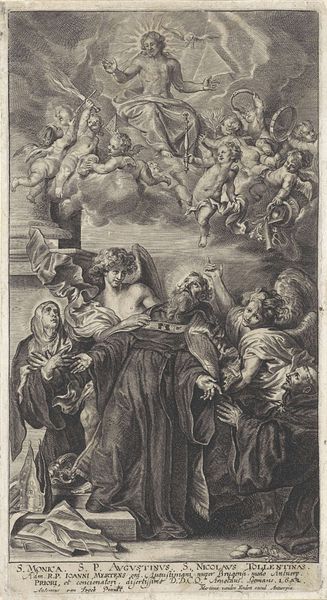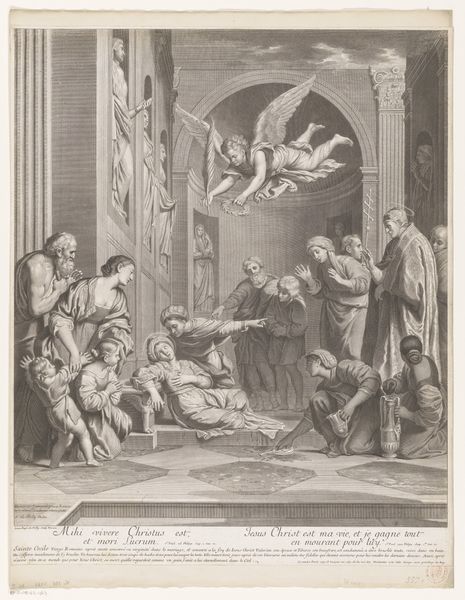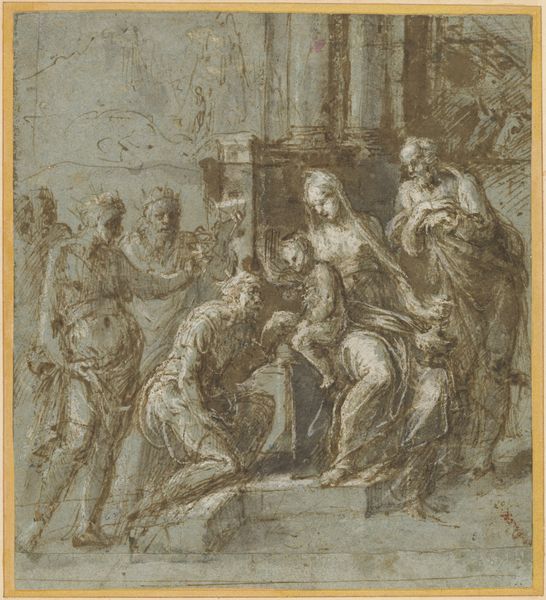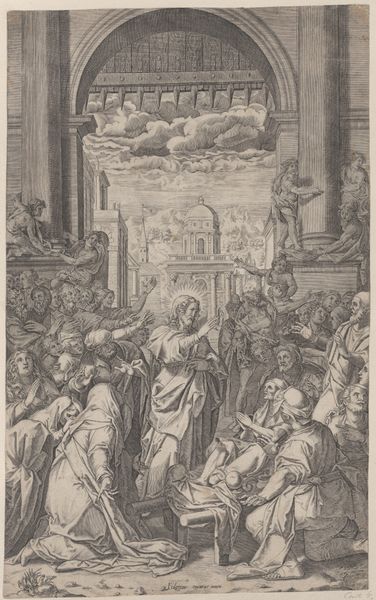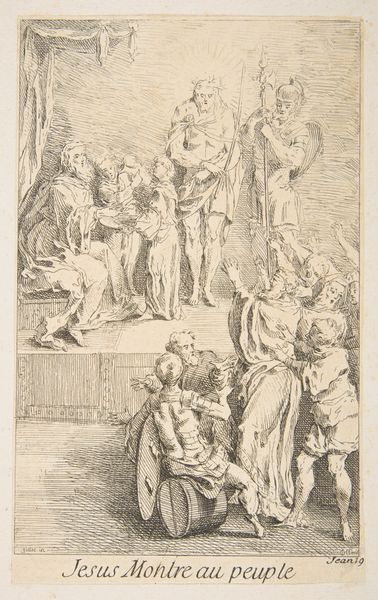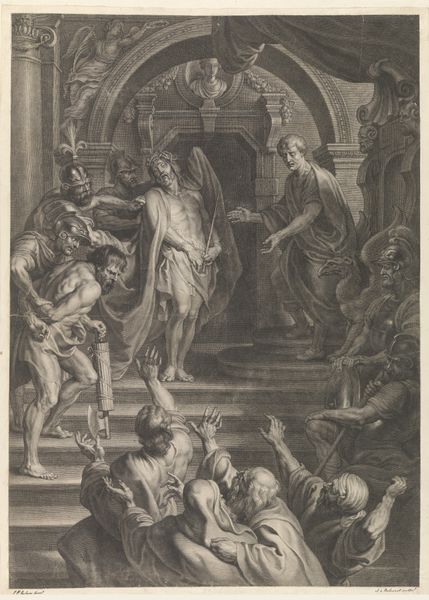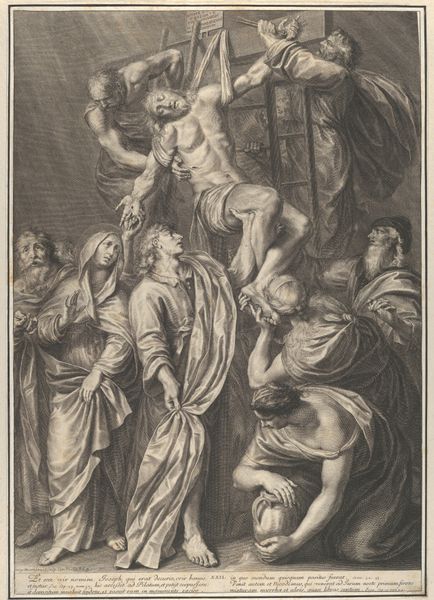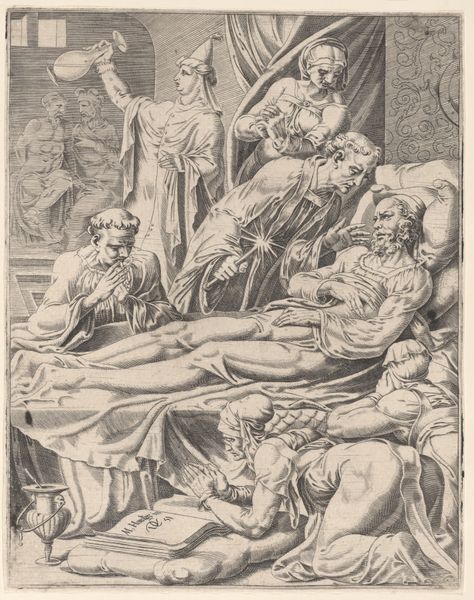
Doubting Thomas, from The Passion of Christ, plate 28 1664
0:00
0:00
drawing, print, engraving
#
drawing
#
baroque
# print
#
figuration
#
history-painting
#
engraving
#
christ
Dimensions: Sheet: 19 3/4 × 14 1/8 in. (50.1 × 35.8 cm)
Copyright: Public Domain
Curator: This is "Doubting Thomas, from The Passion of Christ, plate 28," an engraving by Grégoire Huret, created in 1664. It's currently held in the collection of the Metropolitan Museum of Art. The composition shows Christ, surrounded by the Apostles, as Thomas reaches to touch the wounds. Editor: My first impression is one of theatrical tension; there's a tangible quality of unease, rendered in monochromatic drama. Everyone seems to hold their breath. Curator: That's a good observation. Huret is dealing with a pivotal moment of disbelief and faith, and the image, originally a popular history painting subject, visualizes that moment through gestures, postures, and especially, expressions. The intense gazes really get to me. Editor: The gestures strike me first; note the recurring motif of pointing fingers—drawing our eye not just to the wounds, but more pointedly, the evidence. I feel like they symbolize humanity's need for verification. The wound itself, the mark of violence, has taken on so much resonance through this moment of tangible, symbolic recognition. Curator: It's interesting to frame it that way. On a social and political level, you could consider this a Baroque assertion of power through physical proof—akin to legal or scientific evidence—emphasizing visibility and material understanding over intangible faith at a time when Christianity was in open discussion. Editor: Yes! It goes beyond the purely religious; it resonates on a deeper level, questioning belief in the face of trauma and loss. Look at the expressions—they range from fear and concern, but maybe that's anticipation that we, too, might need undeniable validation. This iconography shows its long term effect here. Curator: This gets to the heart of the image's continued relevance, beyond the theological context, which is worth mentioning and keeping in mind while looking. It is a very particular representation of religious conviction, captured during this historical moment in 1664 by Huret. Editor: And, still, the composition emphasizes shared humanity, expressed through Thomas' very human struggle for certainty. The visual language speaks to both cultural memory and this persistent need for material grounding, for tangible faith, shall we say. Curator: I agree completely; by seeing the symbolism and social tensions intertwining in Huret's artwork, our interpretation becomes ever so much richer, allowing for more interdisciplinary analyses. Editor: It reminds me that art can speak across centuries through potent iconography but requires our close readings.
Comments
No comments
Be the first to comment and join the conversation on the ultimate creative platform.
